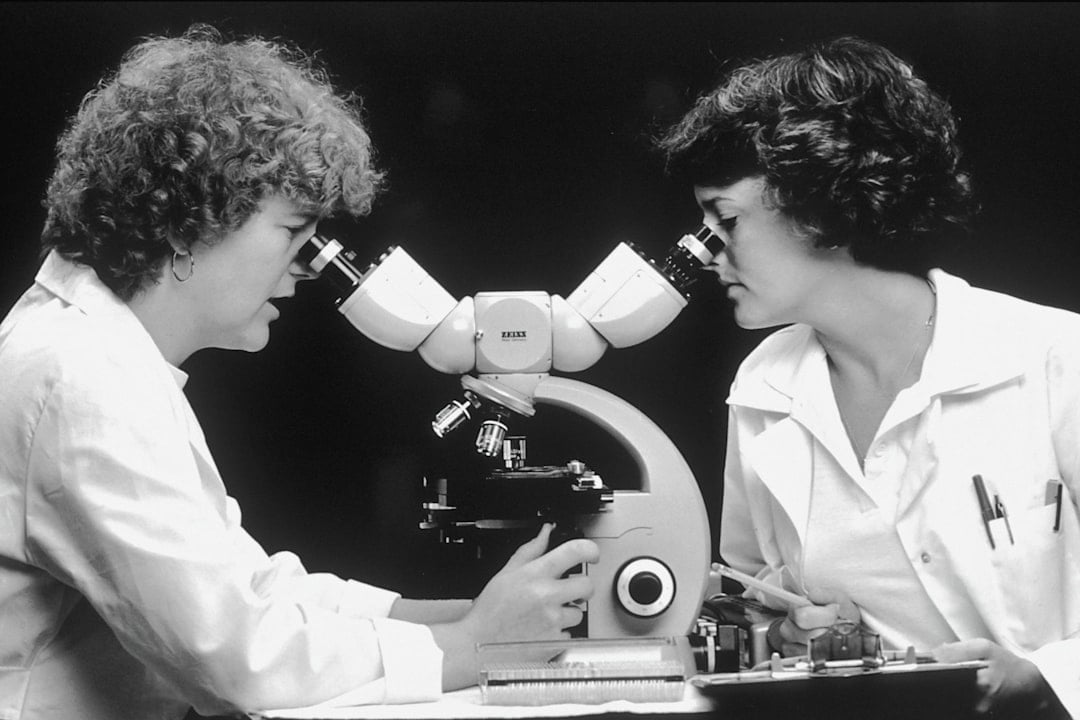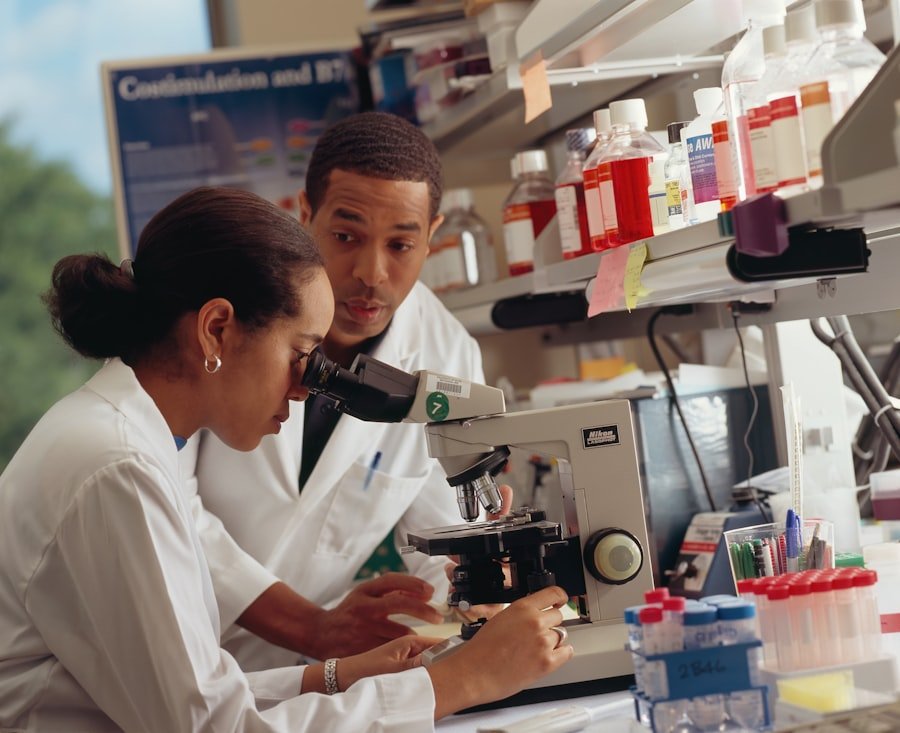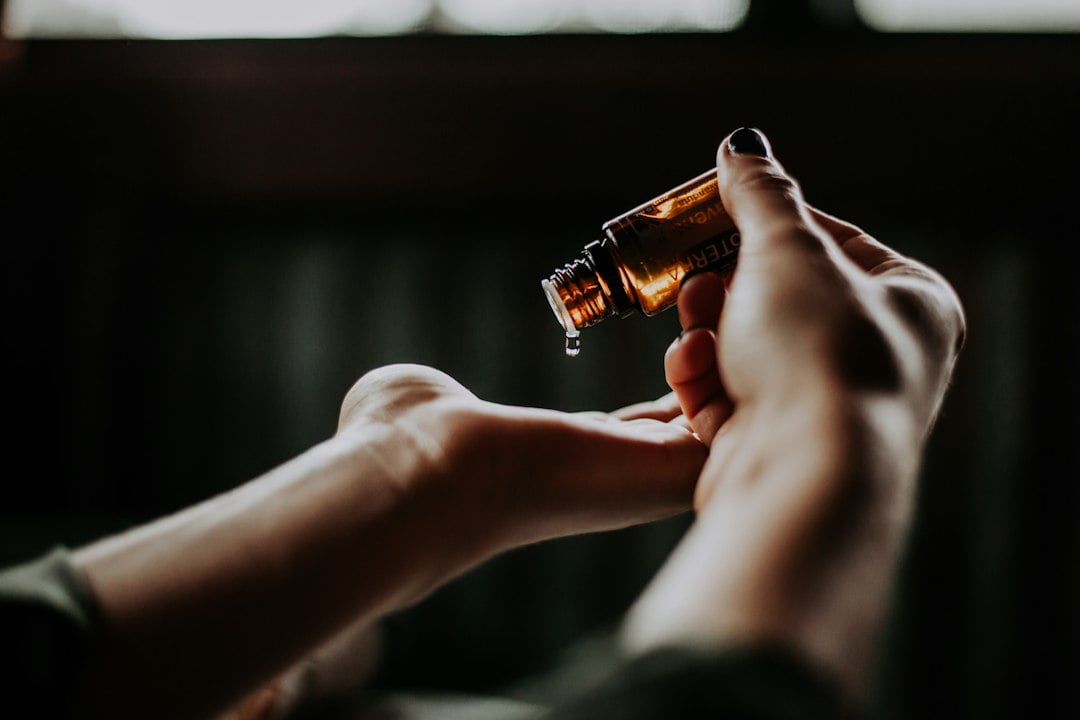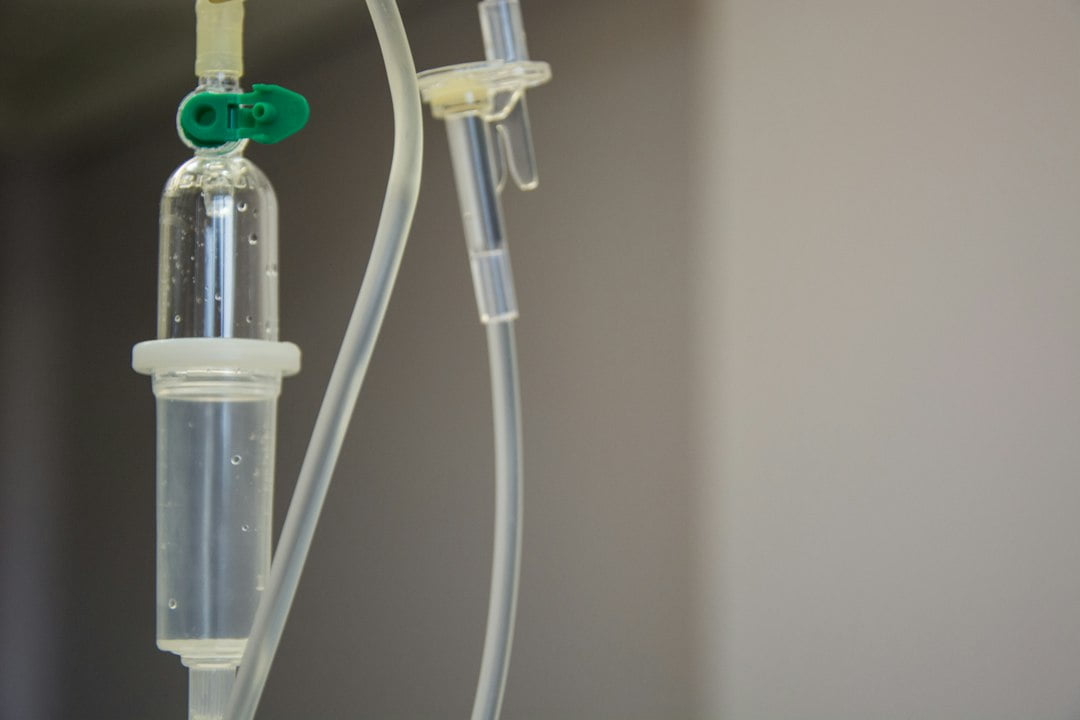
10 Essential Lifestyle Changes for Effective Cancer Prevention
Cancer is a devastating disease that affects millions of people worldwide. It is characterized by the uncontrolled growth and spread of abnormal cells in the body. While there are various treatment options available for cancer, prevention is always better than cure. Taking preventive measures can significantly reduce the risk of developing cancer and improve overall health and well-being.
Key Takeaways
- Cancer prevention involves making lifestyle changes and taking preventive health measures.
- Quitting smoking and limiting alcohol consumption are important lifestyle changes to reduce cancer risk.
- Maintaining a healthy diet, exercising regularly, managing stress, getting enough sleep, and protecting yourself from the sun are also important lifestyle changes.
- Regular health check-ups and avoiding exposure to harmful chemicals can also help prevent cancer.
- Maintaining a healthy weight is crucial for cancer prevention.
Understanding Cancer Prevention
Cancer prevention refers to the actions taken to reduce the risk of developing cancer. It differs from cancer treatment, which focuses on curing or managing the disease after it has already developed. There are three types of cancer prevention: primary, secondary, and tertiary prevention.
Primary prevention aims to prevent cancer from occurring in the first place. This includes lifestyle changes such as quitting smoking, limiting alcohol consumption, maintaining a healthy diet, exercising regularly, managing stress effectively, getting enough sleep, protecting oneself from the sun, avoiding exposure to harmful chemicals, and maintaining a healthy weight.
Secondary prevention involves early detection and treatment of precancerous conditions or early-stage cancer. This includes regular screenings and check-ups to detect cancer at its earliest stages when it is most treatable.
Tertiary prevention focuses on improving the quality of life for cancer survivors and preventing recurrence or progression of the disease. This includes ongoing medical care, rehabilitation, and support services.
Importance of Preventive Health Measures
Preventive health measures are crucial in reducing the risk of cancer. By adopting a proactive approach to health, individuals can significantly decrease their chances of developing this deadly disease. Regular check-ups and screenings can detect cancer at its earliest stages when it is most treatable. Early detection often leads to more successful treatment outcomes and higher survival rates.
In addition to early detection, preventive health measures also promote overall well-being. By adopting a healthy lifestyle, individuals can improve their immune system function, reduce inflammation in the body, and maintain a healthy weight – all factors that contribute to reducing the risk of cancer.
Lifestyle Change #1: Quit Smoking
| Metrics | Baseline | Target | Deadline |
|---|---|---|---|
| Number of cigarettes smoked per day | 20 | 0 | 6 months |
| Money saved per week | 70 | 70 | 1 month |
| Improvement in lung function | None | Significant | 1 year |
| Reduction in risk of heart disease | High | Low | 5 years |
Smoking is one of the leading causes of cancer. It is responsible for approximately 1 in 3 cancer deaths in the United States. Cigarette smoke contains thousands of harmful chemicals, many of which are known to cause cancer. These chemicals can damage DNA and other genetic material, leading to the development of cancerous cells.
Quitting smoking is one of the most important steps an individual can take to reduce their risk of cancer. It is never too late to quit, and the benefits are immediate. Within just a few hours of quitting, heart rate and blood pressure begin to decrease. Within a few weeks, lung function improves, and the risk of heart disease and stroke decreases.
There are many resources available to help individuals quit smoking, including nicotine replacement therapy, medications, counseling, and support groups. It is important to seek professional help and support when quitting smoking to increase the chances of success.
Lifestyle Change #2: Limit Alcohol Consumption
Excessive alcohol consumption has been linked to an increased risk of several types of cancer, including breast, liver, mouth, throat, esophagus, and colorectal cancer. Alcohol can damage DNA and other genetic material in cells, leading to the development of cancerous cells.
To reduce the risk of cancer, it is recommended to limit alcohol consumption. The American Cancer Society recommends that women limit their alcohol intake to one drink per day, while men should limit their intake to two drinks per day. It is also important to note that even moderate alcohol consumption can increase the risk of certain cancers.
To reduce alcohol consumption, individuals can set limits for themselves and stick to them. They can also opt for non-alcoholic beverages or choose lower-alcohol options when drinking. Seeking support from friends, family, or support groups can also be helpful in reducing alcohol consumption.
Lifestyle Change #3: Maintain a Healthy Diet

A healthy diet plays a crucial role in reducing the risk of cancer. Consuming a variety of fruits, vegetables, whole grains, and lean proteins provides the body with essential nutrients and antioxidants that help protect against cancer. On the other hand, a diet high in processed foods, red meat, and sugary beverages has been linked to an increased risk of cancer.
To maintain a healthy diet, individuals should aim to consume at least five servings of fruits and vegetables per day. They should also choose whole grains over refined grains and opt for lean proteins such as fish, poultry, and legumes. It is also important to limit the consumption of processed foods, red meat, and sugary beverages.
In addition to making healthy food choices, portion control is also important. Overeating can lead to weight gain, which is a risk factor for several types of cancer. By practicing portion control and mindful eating, individuals can maintain a healthy weight and reduce their risk of cancer.
Lifestyle Change #4: Exercise Regularly
Regular exercise has been shown to reduce the risk of several types of cancer, including breast, colon, lung, and endometrial cancer. Exercise helps maintain a healthy weight, improves immune system function, reduces inflammation in the body, and regulates hormone levels – all factors that contribute to reducing the risk of cancer.
To incorporate exercise into daily life, individuals should aim for at least 150 minutes of moderate-intensity aerobic activity or 75 minutes of vigorous-intensity aerobic activity per week. This can include activities such as brisk walking, jogging, cycling, swimming, or dancing. Strength training exercises should also be included at least twice a week to build muscle mass and improve overall fitness.
It is important to start slowly and gradually increase the intensity and duration of exercise. Finding activities that are enjoyable and can be done with friends or family can also help increase motivation and adherence to an exercise routine.
Lifestyle Change #5: Manage Stress Effectively
Chronic stress has been linked to an increased risk of cancer. Stress can weaken the immune system, increase inflammation in the body, and disrupt hormone levels – all factors that can contribute to the development of cancer.
To manage stress effectively, individuals can incorporate stress-reducing techniques into their daily routine. This can include activities such as meditation, deep breathing exercises, yoga, tai chi, or engaging in hobbies and activities that bring joy and relaxation. It is also important to prioritize self-care and make time for activities that promote mental and emotional well-being.
Seeking support from friends, family, or a mental health professional can also be beneficial in managing stress effectively. Talking about feelings and concerns can help alleviate stress and provide a fresh perspective on challenging situations.
Lifestyle Change #6: Get Enough Sleep
Lack of sleep has been linked to an increased risk of cancer. Sleep deprivation can disrupt hormone levels, impair immune system function, and increase inflammation in the body – all factors that contribute to the development of cancer.
To ensure adequate sleep, individuals should aim for 7-9 hours of quality sleep per night. Establishing a regular sleep schedule, creating a relaxing bedtime routine, and creating a sleep-friendly environment can all help promote better sleep. It is also important to limit exposure to electronic devices before bed as the blue light emitted by these devices can interfere with sleep.
If sleep problems persist despite making lifestyle changes, it is important to consult a healthcare professional for further evaluation and treatment options.
Lifestyle Change #7: Protect Yourself from the Sun
Excessive sun exposure is a major risk factor for skin cancer. Ultraviolet (UV) radiation from the sun damages the DNA in skin cells, leading to the development of cancerous cells. It is important to protect oneself from the sun to reduce the risk of skin cancer.
To protect oneself from the sun, individuals should seek shade when the sun is strongest, usually between 10 am and 4 pm. They should also wear protective clothing, such as long-sleeved shirts, pants, and wide-brimmed hats. Applying sunscreen with a sun protection factor (SPF) of at least 30 and reapplying it every two hours or after swimming or sweating is also important.
It is also important to avoid tanning beds and sunlamps, as they emit UV radiation that can increase the risk of skin cancer.
Lifestyle Change #8: Get Regular Health Check-Ups
Regular health check-ups are crucial in cancer prevention. They allow healthcare professionals to detect any potential health issues or abnormalities early on, including cancer. Early detection often leads to more successful treatment outcomes and higher survival rates.
To ensure regular health check-ups, individuals should schedule routine appointments with their healthcare provider. This can include annual physical exams, screenings for various types of cancer (such as mammograms, Pap smears, colonoscopies), and vaccinations (such as the HPV vaccine).
It is important to communicate openly with healthcare providers about any concerns or symptoms experienced. They can provide guidance on appropriate screenings and tests based on individual risk factors and medical history.
Lifestyle Change #9: Avoid Exposure to Harmful Chemicals
Exposure to harmful chemicals has been linked to an increased risk of cancer. Chemicals found in certain products, such as cleaning agents, pesticides, and industrial pollutants, can damage DNA and other genetic material in cells, leading to the development of cancerous cells.
To avoid exposure to harmful chemicals, individuals should read labels carefully and choose products that are free from toxic chemicals. They should also use protective equipment when working with chemicals or in environments where exposure is likely.
It is also important to be aware of potential environmental hazards in the community and take appropriate measures to minimize exposure. This can include avoiding areas with high levels of pollution or seeking ways to reduce exposure, such as using air purifiers or wearing masks.
Lifestyle Change #10: Maintain a Healthy Weight
Maintaining a healthy weight is crucial in reducing the risk of cancer. Obesity has been linked to an increased risk of several types of cancer, including breast, colon, kidney, and pancreatic cancer. Excess body fat can produce hormones and growth factors that promote the growth of cancer cells.
To maintain a healthy weight, individuals should aim for a body mass index (BMI) within the normal range (18.5-24.9). This can be achieved through a combination of healthy eating and regular exercise. It is important to focus on long-term lifestyle changes rather than quick fixes or fad diets.
Portion control, mindful eating, and choosing nutrient-dense foods can help maintain a healthy weight. Regular exercise, as discussed earlier, is also important in achieving and maintaining a healthy weight.
Cancer prevention is crucial in reducing the burden of this devastating disease. By adopting lifestyle changes and taking preventive health measures, individuals can significantly reduce their risk of developing cancer. Quitting smoking, limiting alcohol consumption, maintaining a healthy diet, exercising regularly, managing stress effectively, getting enough sleep, protecting oneself from the sun, getting regular health check-ups, avoiding exposure to harmful chemicals, and maintaining a healthy weight are all important steps in cancer prevention.
It is important to remember that prevention is always better than cure. By taking proactive steps towards health and well-being, individuals can not only reduce their risk of cancer but also improve their overall quality of life. It is never too late to start making positive changes – every small step counts towards a healthier future.
If you’re interested in learning more about key lifestyle changes for cancer prevention, you might find this article from Wave Magnets insightful. They discuss the importance of maintaining a healthy lifestyle and provide practical tips on how to reduce your risk of developing cancer. From diet and exercise to stress management and environmental factors, this article covers a wide range of strategies for cancer prevention. Check it out here for more information.
FAQs
What are the key lifestyle changes for cancer prevention?
The key lifestyle changes for cancer prevention include maintaining a healthy weight, engaging in regular physical activity, avoiding tobacco and excessive alcohol consumption, eating a healthy diet, protecting your skin from the sun, and getting recommended cancer screenings.
How does maintaining a healthy weight help prevent cancer?
Maintaining a healthy weight can help prevent cancer by reducing the risk of developing certain types of cancer, such as breast, colon, and kidney cancer. Being overweight or obese can also increase the risk of developing other health problems, such as heart disease and diabetes.
What types of physical activity can help prevent cancer?
Engaging in regular physical activity, such as brisk walking, jogging, cycling, or swimming, can help prevent cancer. Aim for at least 150 minutes of moderate-intensity activity or 75 minutes of vigorous-intensity activity per week.
How does tobacco use increase the risk of cancer?
Tobacco use, including smoking and chewing tobacco, can increase the risk of developing many types of cancer, including lung, throat, mouth, and bladder cancer. It can also increase the risk of heart disease and other health problems.
What is a healthy diet for cancer prevention?
A healthy diet for cancer prevention includes plenty of fruits, vegetables, whole grains, and lean protein sources. It is also important to limit processed and red meat, sugary drinks, and foods high in saturated and trans fats.
How can I protect my skin from the sun?
To protect your skin from the sun, wear protective clothing, such as long-sleeved shirts and hats, and use sunscreen with an SPF of at least 30. Avoid tanning beds and seek shade during peak sun hours.
Why are cancer screenings important?
Cancer screenings are important because they can detect cancer early, when it is most treatable. Screening tests can also help identify precancerous conditions, which can be treated before they develop into cancer. It is important to follow recommended screening guidelines for your age and gender.


















